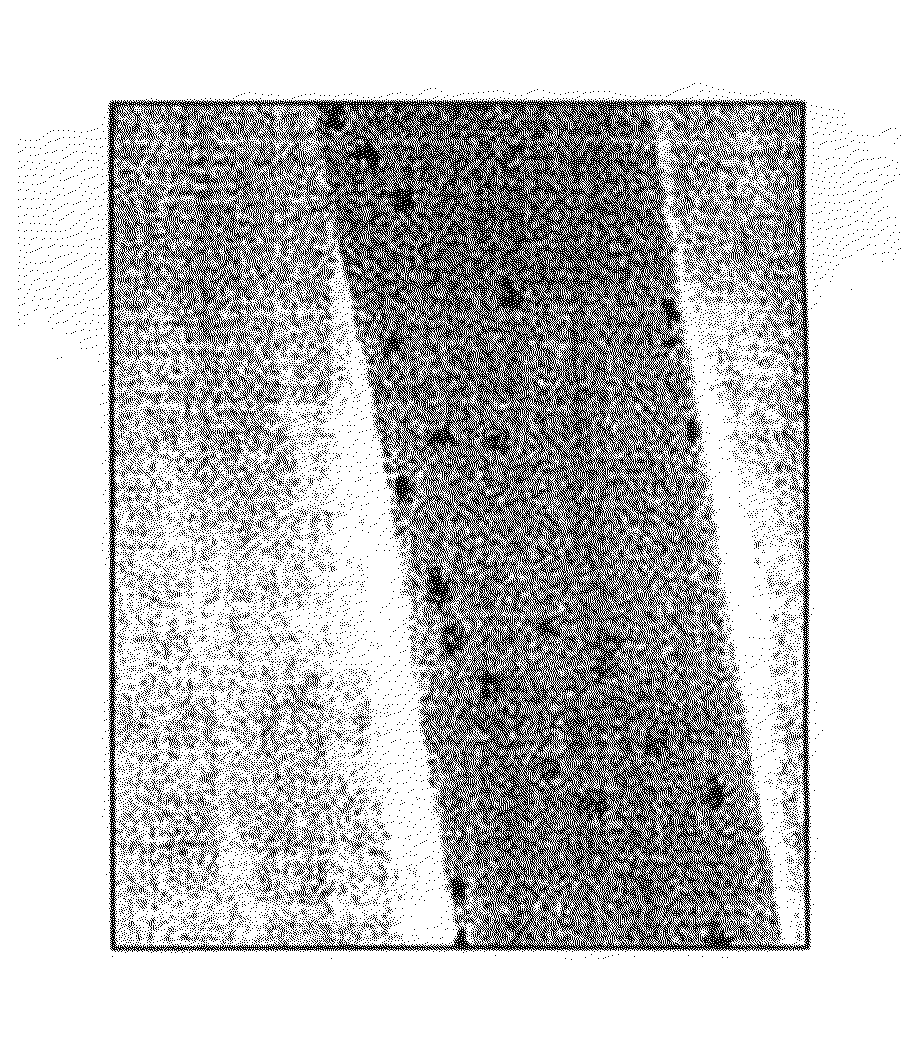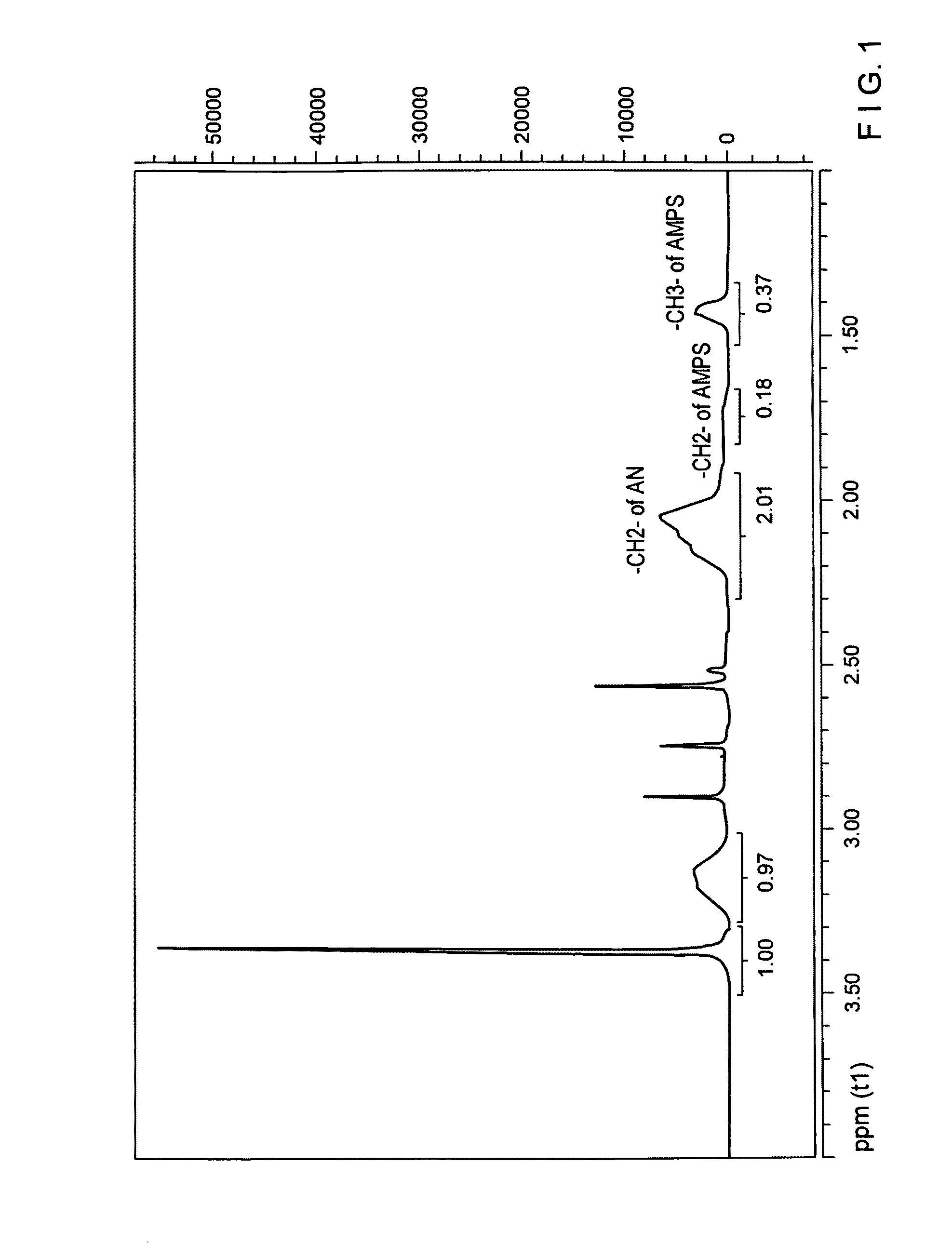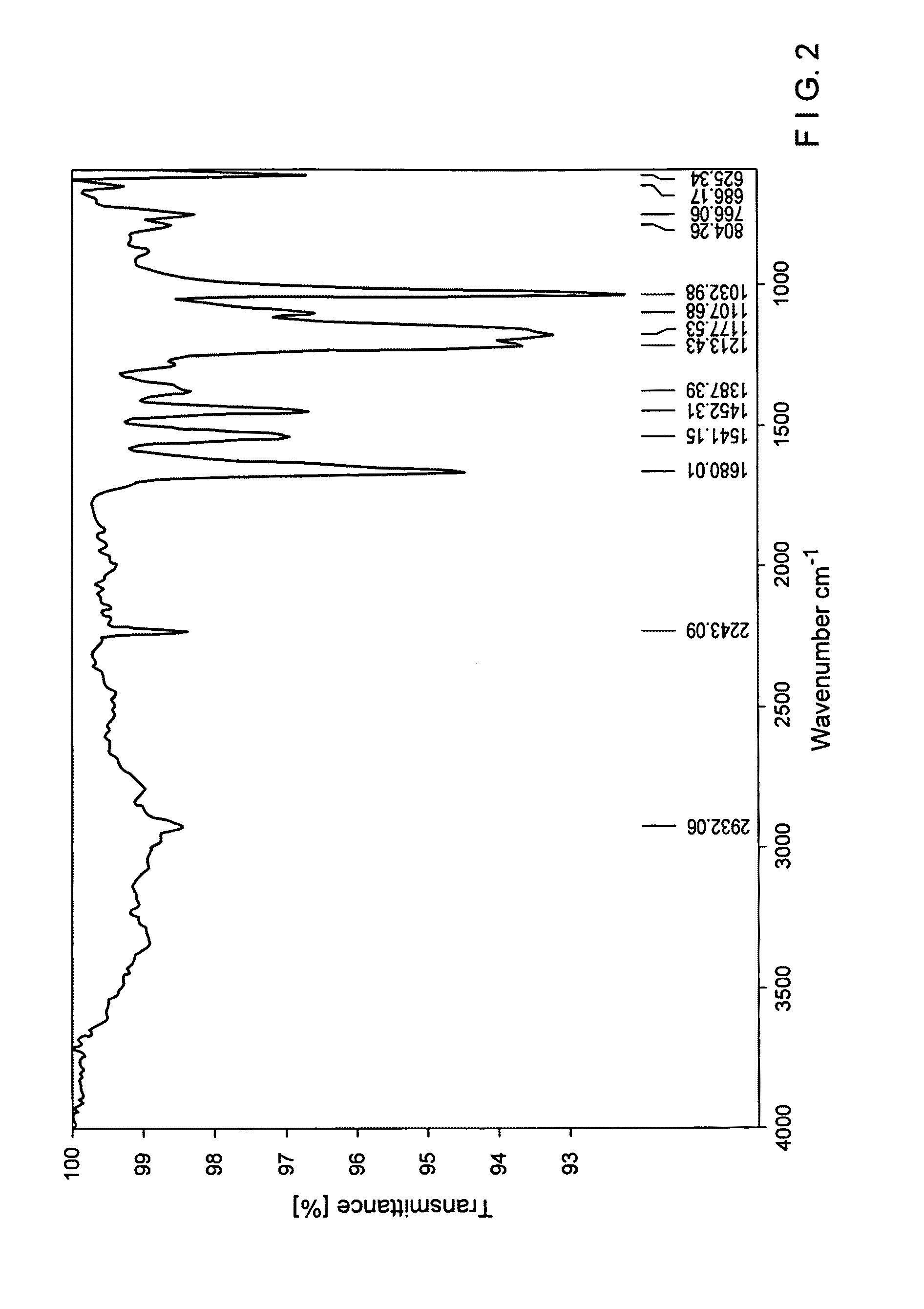Carbon nanofibers containing catalyst nanoparticles
a technology of carbon nanofibers and catalyst nanoparticles, which is applied in the chemical after-treatment of synthetic polymer filaments, nanotechnology, fibre chemical features, etc., can solve the problems of limited metal particle size on these nanofibers, high cost of catalyst materials, etc., and achieves cost-effective
- Summary
- Abstract
- Description
- Claims
- Application Information
AI Technical Summary
Benefits of technology
Problems solved by technology
Method used
Image
Examples
example 1
[0071]The solution copolymerization of acrylonitrile (AN) with 2-acrylamido-2-methylpropane sulfonic acid (AMPS) is accomplished in N,N-dimethylformamide (DMF) at 80° C. for 24 hours. Monomers, initiator and solvent are purified before the reaction by conventional methods; recrystallization, vacuum distillation and passing through a column where needed.
[0072]Monomer ratios are selected to achieve a 95 mol % acrylonitrile and 5 mol % AMPS in the final polymer according to the monomer reactivity ratios, 10.09 gr acrylonitrile and 2.05 gr AMPS respectively.
[0073]AIBN is used as radical initiator at 1 / 1000 mol % ratio with respect to monomers. 20 ml of DMF is used as solvent. The solution is deaerated by 3 freeze-thaw cycles at liquid nitrogen temperature and the reactor vessel is kept at nitrogen atmosphere through bubbling during the reaction. The resulting product is precipitated in acetone and dried in vacuum oven at 50° C. for 24 hours. 9.59 gr of product handled at the end of the ...
example 2
[0091]A clear 15 wt % P(AN-co-5% AMPS) polymer solution is prepared by 1) adding 1.5 g P(AN-co-5% AMPS) into 10 g (10.6 milliliter) N,N-dimethylformamide (DMF), 2) mixing with a magnetic stir bar at room temperature for 24 hours.
[0092]A 0.01 M salt solution is prepared by adding 3.54 mg palladium (II) chloride in 2.0 milliliter polymer solution. To ensure homogeneity the polymer solution is mixed for 24 hours with a magnetic stir bar at room temperature.
[0093]The homogeneous solution is electrospinned at the electric field voltage of 10 kV with the tip-to-plate distance about 10 cm. The electrospinning process forms a polymer fiber membrane and the SEM analysis reveals that the average fiber diameter is about 350 nm.
[0094]The polymer fiber is wetted with %1 v / v hydrazine-water solution and left for 24 hours. The electrospun fibers are then washed with distilled water several times until the extracting solution pH turns to neutral and than the fibers are dried in vacuum oven at 50° C...
example 3
[0096]A clear 15 wt % P(AN-co-5% AMPS) polymer solution is prepared by 1) adding 1.5 g P(AN-co-5% AMPS) into 10 g (10.6 milliliter) N,N-dimethylformamide (DMF), 2) mixing with a magnetic stir bar at room temperature for 24 hours.
[0097]A 0.005 M salt solution is prepared by adding 1.77 mg palladium (II) chloride in 2.0 milliliter polymer solution. To ensure homogeneity the polymer solution is mixed for 24 hours with a magnetic stir bar at room temperature.
[0098]The homogeneous solution is electrospinned at the electric field voltage of 10 kV with the tip-to-plate distance about 10 cm. The electrospinning process forms a polymer fiber membrane and the SEM analysis reveals that the average fiber diameter is about 350 nm.
[0099]The polymer fiber is wetted with %1 v / v hydrazine-water solution and left for 24 hours. The electrospun fibers are then washed with distilled water several times until the extracting solution pH turns to neutral and than the fibers are dried in vacuum oven at 50° ...
PUM
| Property | Measurement | Unit |
|---|---|---|
| Temperature | aaaaa | aaaaa |
| Temperature | aaaaa | aaaaa |
| Temperature | aaaaa | aaaaa |
Abstract
Description
Claims
Application Information
 Login to View More
Login to View More - R&D
- Intellectual Property
- Life Sciences
- Materials
- Tech Scout
- Unparalleled Data Quality
- Higher Quality Content
- 60% Fewer Hallucinations
Browse by: Latest US Patents, China's latest patents, Technical Efficacy Thesaurus, Application Domain, Technology Topic, Popular Technical Reports.
© 2025 PatSnap. All rights reserved.Legal|Privacy policy|Modern Slavery Act Transparency Statement|Sitemap|About US| Contact US: help@patsnap.com



